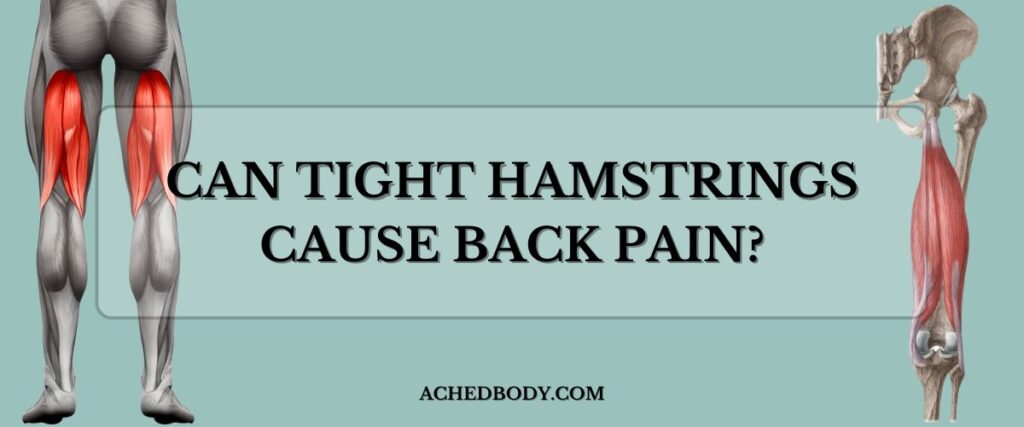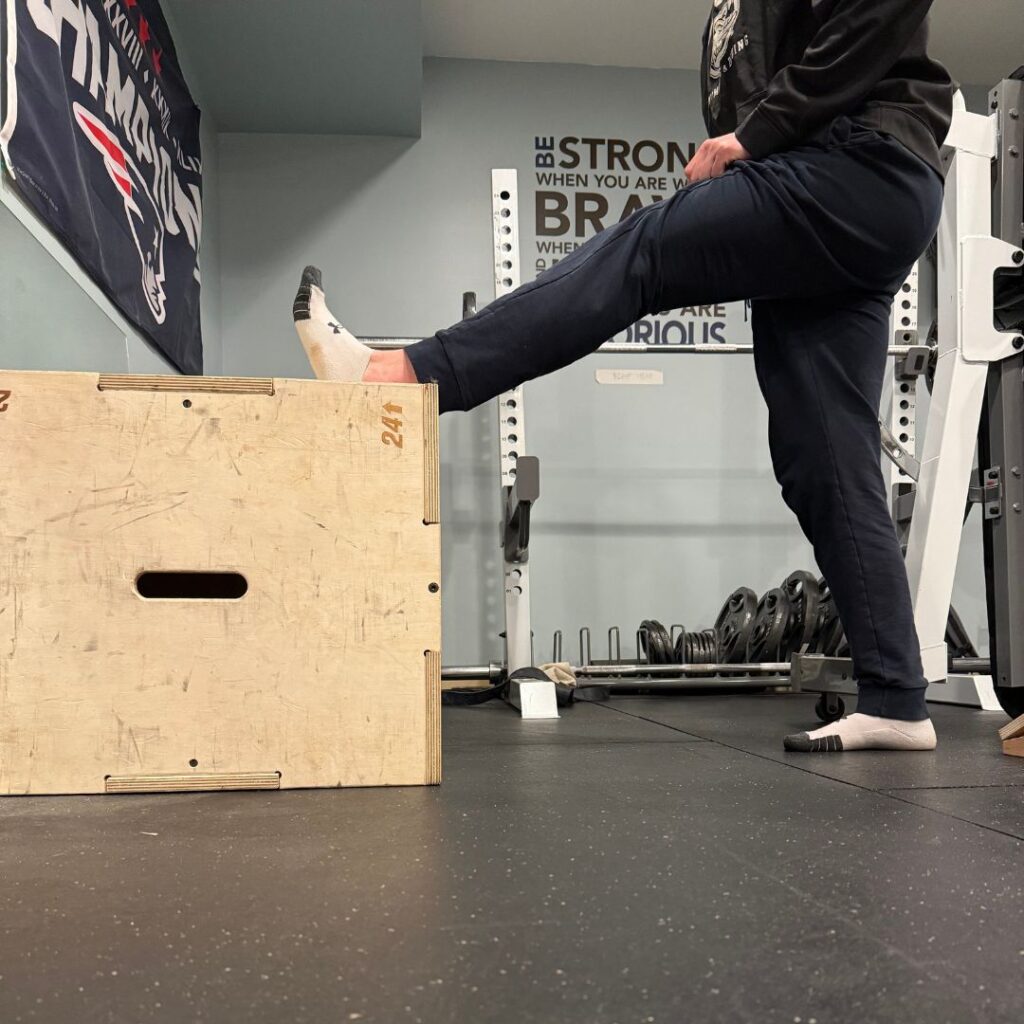
Back Pain Caused By Tight Hamstrings
Many people experience lower back pain and wonder if tight hamstrings might be to blame.
In this guide, we’ll cover why this may be the case for you and how to find out if your hamstrings are the cause.
If it is your problem, you will need the hamstring trigger point guide and the Hamstring Stretching guide next.
If not, another muscle may be your issue, and you can learn how to fix those with our Ultimate Guides!
The Anatomy and Biomechanics Connection
The hamstrings are a group of 3 main muscles that run along the back of your thighs, connecting your pelvis to your lower leg.
This article is focused on the back so we will focus on how tight hamstrings affect the pelvis and create issues in your back.
If you want to learn about hamstrings causing knee pain, check out this article where we dive into the topic.
Anyways, When these muscles become tight, they can pull on the pelvis, causing your hips to tilt out of natural alignment.
This altered alignment is what causes the changes in other muscles to create the back pain you’re experiencing.
Think about it this way: when your hamstrings are weak, tight, or overactive, other muscles have to compensate.
This means that other muscles like your glutes or lower back will become overactive as a result, which will lead to injury.
Also, there will be added pressure across the hip joint any time a muscle is too tight.
Over time, this can wreak havoc on the joint and your overall pain.
Understanding this biomechanics shows how a problem in one area (the hamstrings) can significantly affect your lower back.
Recognizing the Signs of Hamstring-Related Back Pain
If you have pain in your back or in your glutes, it may be worth testing your hamstring flexibility for:
- Reduced range of motion
- Stiffness after prolonged sitting
- Difficulty bending forward without feeling strain in your lower back

This will help determine if your hamstrings are tight and a part of the issue or perhaps the entire issue.
If you think they are, use the prevention tips below to fix your hamstring tightness!
Prevention and Treatment Strategies
Start by learning to stretch your hamstrings (with this video) to get rid of immediate tightness. I outline all of the hamstring stretches that you can use from beginner to advanced in my hamstring stretching guide.
After you spend a few days lengthening, you should feel the relief. But now is the time to supercharge it with hamstring trigger point therapy.

Trigger point therapy is my secret weapon for keeping my body pain-free, even though I train a lot!
If one to two weeks of dedicated stretching and trigger pointing doesn’t fix your back pain, then you’ll know your hamstrings were not the only problem.
Next, try addressing glute or lower back tightness directly.
Learn more in my Ultimate Guide to Stretching and Ultimate Guide to Trigger Point Therapy.
What’s Next
Use the Hamstring Stretching guide first and spend at least 5 minutes on each leg to get fast improvement.
From there, adding in self-release techniques for your hammys will get rid of the adhesions and allow you to smooth out the muscle fibers.
If you want to understand how trigger point therapy works, take a look at the history of trigger point therapy and what is going on under the surface!
Good luck!
-Nick